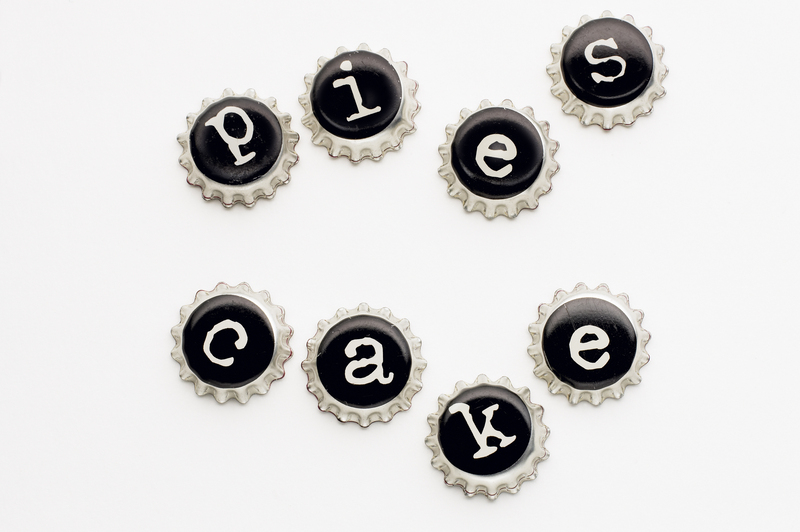Craft Fabulous Furnishings from Forgotten Materials: The Ultimate Guide to Upcycling Home Decor
Have you ever glanced at an old wooden door, a discarded pallet, or a stack of worn-out magazines and wondered what fabulous furnishings you could create? The journey of turning forgotten materials into stunning home decor is both eco-friendly and endlessly rewarding. In this extensive guide, you'll discover how to transform overlooked items into eye-catching and practical treasures for your living space.
Why Craft Furnishings from Forgotten Materials?
Upcycling--the art of reusing materials to create something valuable--has taken the design world by storm. Not only does it reduce waste and environmental impact, but it can also bring unique character and personality to your home. Crafting fabulous furnishings from forgotten materials helps you to:
- Save money by repurposing what you already have or can find for free.
- Add individuality to your decor through one-of-a-kind pieces.
- Reduce landfill waste and lower your carbon footprint.
- Unlock creativity by approaching design from a resourceful angle.
- Tell a story--every piece crafted from forgotten materials has history and soul.

Popular Forgotten Materials for Crafting Home Furnishings
Before you embark on your next creative adventure, it's important to know which materials work best for upcycled furniture and decor projects. Consider these popular candidates:
- Wooden Pallets and Crates: Used for beds, coffee tables, bookshelves, more.
- Old Doors and Windows: Excellent for headboards, room dividers, and wall art.
- Worn-out Furniture: Revamp chairs, sofas, and side tables for a renewed look.
- Metal Pipes and Fittings: Perfect for industrial-style shelving and tables.
- Glass Jars and Bottles: Convert into stylish lamps, vases, or chic organizing containers.
- Fabric Scraps: Patchwork upholstery, rugs, and curtains get a new life.
- Paper Products: Old newspapers, magazines, and books can be woven, molded, or folded into statement pieces.
Step-by-Step Guide: Transforming Forgotten Materials into Fabulous Furnishings
Ready to craft stylish furniture from forgotten materials? Follow these essential steps for a successful upcycling project.
1. Source Your Materials
Start by gathering forgotten or discarded items. Check your attic, garage, or ask friends and family. Don't overlook community resources such as:
- Online marketplaces (like Craigslist, Facebook Marketplace)
- Local recycling centers
- Thrift stores and flea markets
- Curbside pickups and salvage yards
*Tip: Look for good "bones"--the basic structure should be sound, even if it looks rough.*
2. Clean and Prepare
Thoroughly clean all materials to remove dirt, mold, and old finishes. For wood, sand away splinters and apply primer if you plan to paint. Take basic safety precautions, especially when working with potentially hazardous items (like old lead paint or rusty metal).
3. Plan Your Design
Sketch out your vision or gather inspiration from DIY upcycled furniture blogs and platforms like Pinterest. Decide on:
- The function of your piece (e.g., storage, seating, decoration)
- The dimensions and scale to fit your home
- The finishes (paint, stain, upholstery fabrics, hardware)
- Embellishments (handles, knobs, stencils, decals)
4. Assemble and Craft
Depending on your materials, you may need tools such as saws, drills, sandpaper, adhesives, and sewing machines. Take your time to ensure stability and safety. Use screws, brackets, or strong adhesive for secure construction.
5. Finish and Personalize
Apply paint, stain, or varnish as desired; incorporate decorative touches such as stenciled designs or decoupage. Add new life to soft furnishings by reupholstering with vibrant patterns or mixing different fabrics for a patchwork look.
Creative Project Ideas: Fabulous Furnishings from Forgotten Materials
Stuck for inspiration? Here are some popular and tested ideas that bring brilliance and style into your home by using repurposed, upcycled materials:
Pallet Coffee Table
- Stack two wooden pallets, sand, and add caster wheels for mobility.
- Stain or paint to coordinate with your decor.
- Add a glass top for a sleek, modern finish.
Door to Headboard Transformation
- Repurpose an old paneled door as a statement headboard.
- Paint or distress for a rustic, vintage look.
- Secure firmly to your bedframe or wall.
Suitcase Side Table or Storage
- Stack a couple of sturdy vintage suitcases on top of each other.
- Add tapered wooden legs for extra flair.
- Use as a nightstand with hidden storage!
Ladder Bookshelf
- Lean or anchor an old wooden ladder against the wall.
- Use steps as open shelving for books and plants.
- Paint in bold colors for a pop of vibrancy.
Magazines and Paper Stool
- Tightly roll or fold stacks of magazines and newspapers.
- Secure with strong belts or rope.
- Add a cushion or upholster for a unique, eco-friendly seat.
Essential Tips for Success: How to Master Upcycled Furniture Creation
- Choose durable base materials: Look for pieces that can bear weight and withstand daily use.
- Don't skip preparation: Thorough cleaning and sanding make a big difference in the final look.
- Embrace imperfection: Quirks, chips, and dents tell a story and add authenticity to your furnishings.
- Mix materials: Combine wood, metal, glass, and fabric for dramatic contrasts.
- Test for safety: Especially for seating and shelving, ensure your creation is stable before use.
- Involve family and friends: Upcycling is a wonderful way to spend creative time together while sharing ideas.
Frequently Asked Questions About Upcycled Furnishings
Is it cost-effective to craft fabulous furnishings from forgotten materials?
Absolutely! Most upcycling enthusiasts find that their projects cost far less than buying new furniture. Materials are often free or extremely inexpensive, and your only other investments are time and creativity.
How do I ensure the longevity of upcycled furniture?
Use high-quality sealants, varnishes, and protective coatings. Reinforce joins with screws or brackets where possible, and always check for hidden weaknesses in old materials.
Are there eco-friendly paints and finishes to use?
Yes. Search for low-VOC and water-based paints, natural oils (like linseed or tung), and waxes made from beeswax or soy. These choices reduce harmful emissions in your home.
What if I'm not handy? Can beginners still succeed?
Definitely! There are countless tutorials online for basic projects and you can start small--think decorative wall hangings, painted jars, or simple shelves. As your confidence grows, so can the complexity of your creations.
How can I add a professional finish to my upcycled furnishings?
- Smooth surfaces: Sand thoroughly between coats of paint or stain.
- Use quality brushes and rollers: This makes a huge difference for paint finishes.
- Apply a clear protective coat: Helps resist water rings, spills, and scuffs.
- Add hardware: Upgraded handles, knobs, and legs offer a designer touch.
Eco-Friendly Impact: Why Upcycled Furnishings Matter
Each year, millions of tons of furniture and household goods end up in landfills. By crafting fabulous furnishings from forgotten materials, you can play a vital role in conservation efforts by:
- Preserving natural resources (trees, minerals, water)
- Reducing demand for new manufacturing and energy
- Encouraging a sustainable, circular economy
- Minimizing the toxic impact of landfill waste
Your creative projects do more than brighten your home--they create a positive ripple effect for the environment.

Get Inspired: Where to Find Ideas and Tutorials
Looking for even more upcycling inspiration? Here's where you can find ideas, tutorials, and a vibrant community sharing their own stunning creations:
- Pinterest boards dedicated to upcycled furniture
- DIY YouTube channels and video tutorials
- Design and craft blogs specializing in sustainable decor
- Instagram hashtags such as #upcycle, #repurposedfurniture, #ecohome
- Local maker spaces and community workshops
Conclusion: Your Adventure in Upcycled Home Furnishings Starts Today
From salvaged wood to retired suitcases, there's a hidden treasure trove of potential to craft fabulous furnishings from forgotten materials. By embracing this sustainable, creative approach, you make your home more unique, environmentally friendly, and full of personal pride. So scour your closets, stroll through yard sales, and begin transforming yesterday's cast-offs into tomorrow's cherished decor.
Don't wait--start your next upcycling project today and watch as your living space blossoms with personality and eco-conscious style!